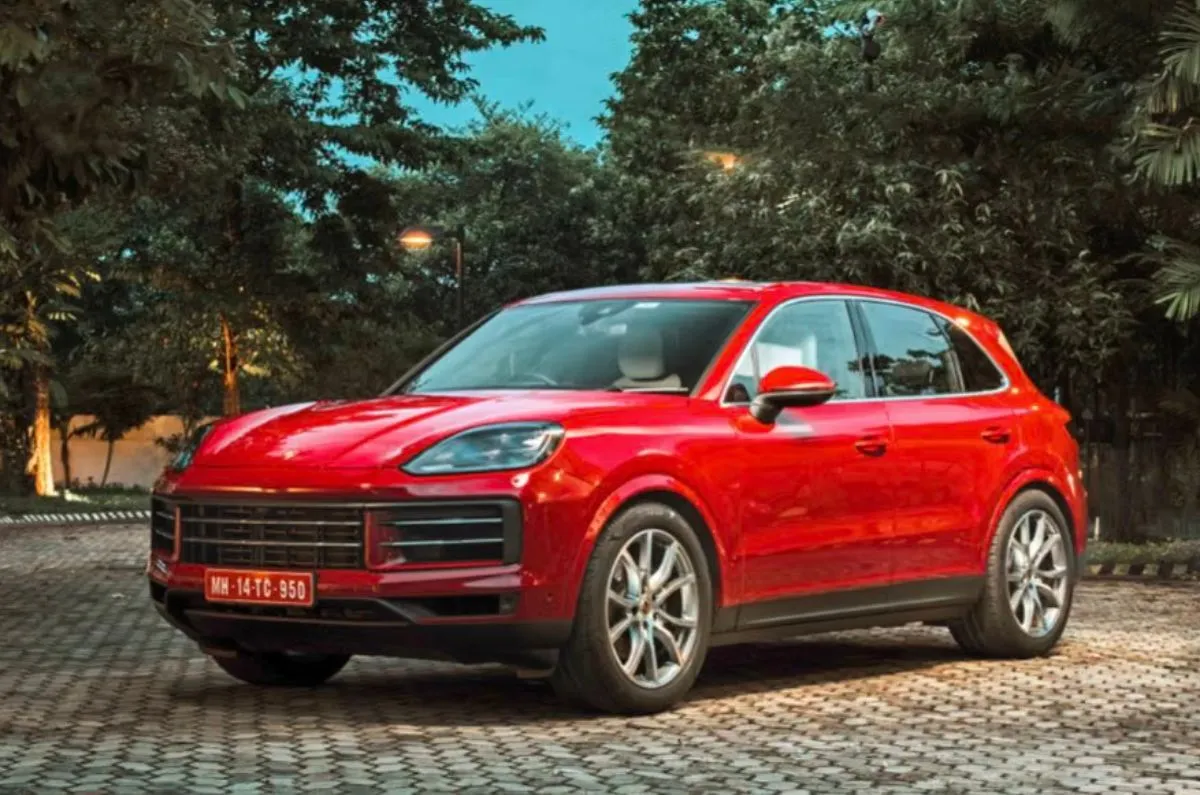
Many credit the original Porsche Cayenne – launched in 2002 – with saving the brand from extinction. It was, after all, the first proper performance SUV and despite its divisive styling, it proved a sales success. Now in its third generation, the Cayenne continues to be a bestseller in India and globally. With a comprehensive facelift in 2023 that brought the exterior and interior bang up to date, and the reintroduction of the V8 engine in the GTS, the Cayenne is better than ever. But it isn’t perfect. Here are three reasons it deserves your money, and two reasons to look elsewhere.
Reasons to buy
Performance
![]()
For a while, the Cayenne was sold in India with only a six-cylinder petrol. While the 3.0-litre twin-turbo V6 makes a respectable 353hp and 500Nm, delivering a strong 0-100kph sprint in 5.7sec, the V8 is the real highlight. The GTS’ 4.0-litre twin-turbocharged V8 puts out 500hp and 659Nm of torque, dropping the 0-100kph time to just 4.4sec. Both engines are paired with a smooth-shifting 8-speed ZF automatic that sends power to all four wheels.
Sporty handling and standard air suspension
![]()
One of the primary reasons to pick the Cayenne over rivals like the Range Rover Sport or BMW X5 is its handling balance. India-spec cars get adaptive air suspension and Porsche Active Suspension Management (PASM), tuned more for control than outright comfort. Body control is excellent, grip is strong, and the steering is a particular highlight – sharp, precise, and perfectly weighted. Even when you aren’t corner-carving, its sporty setup gives it rock-solid high-speed stability.
Interior and practicality

The facelift brought a fresh interior that aligns closely with the Taycan’s interior architecture. The dash gets two screens as standard – a crisp 12.3-inch infotainment touchscreen and a 12.6-inch curved driver’s display – with an optional third screen for the passenger. What the design lacks in flair, it makes up for in ease of use and practicality. The standard sports seats are firm but very supportive, holding you in place during hard driving. Practicality is strong too, with a generous 772 litres of boot space in the SUV and 592 litres in the Coupe.
Reasons to skip
Ride quality and rear cabin experience

The flip side of its sporty intent is that the Cayenne isn’t the best SUV to be chauffeured in. The ride, while not uncomfortable, is taut and less plush than a Range Rover Sport’s. Road and mechanical noise also find their way into the cabin on imperfect roads. The shape of the rear bench is another drawback; while the outer two seats are well contoured and supportive, the centre seat is the opposite making it more of a 4 seater. There are niceties like standard four-zone climate control, but rivals still offer a better rear-seat experience.
Price of options

The Cayenne V6 starts at Rs 1.48 crore and the V8-powered GTS at Rs 2.08 crore, but that doesn’t tell the whole story. Many features that are standard on rivals are expensive extras here. Seat ventilation, for instance, costs Rs 2.10 lakh, while a panoramic roof on the V6 is Rs 4.03 lakh. The upside is near-limitless customisation, with wheels, Paint to Sample colours, and a wide range of interior finishes. The downside is that it’s all too easy to add several lakhs to the sticker price with just a handful of options.
Also See:
Porsche Cayenne GTS, Panamera GTS on a race track: Fast family fun
Porsche Cayenne and Range Rover Sport: Are they worth the premium pricing?

